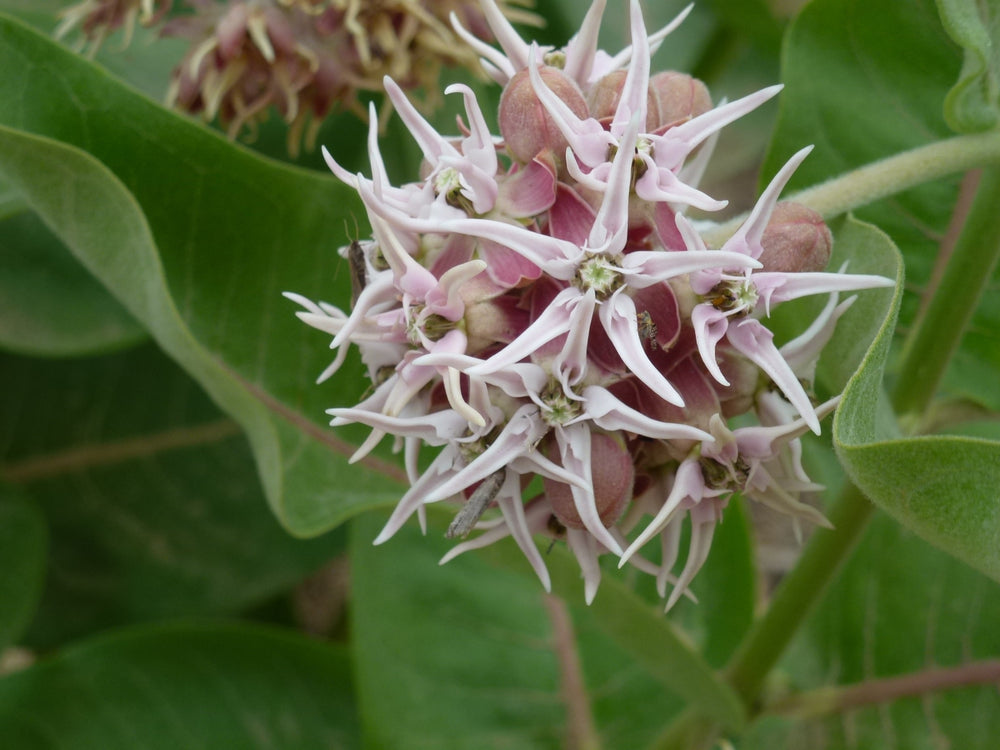Showy Milkweed
- Shipping Available
- In stock, ready to ship
- Backordered, shipping soon
Asclepias speciosa
Used by many tribes for making everything from rope to cloth to medicine this beautiful milkweed has a very interesting ethnobotanical history. Though once common, it was targeted for eradication because of it's perceived toxicity to livestock. This same toxicity is critical for the survival of monarch butterflies, it is now clear that the survival of both species are tied together. Share in the history & future by planting these plants today. Found in high plains of Texas, north to Canada, and west to California.
A stout, sparingly branched, pubescent perennial, 1 1/2-3 ft. tall, with large, oval, blue-green leaves and showy, spherical clusters of rose-colored flowers. Flowers occur at the top of the stem and on stalks from leaf axils. A grayish, velvety plant with erect leafy stems and with umbels of star-like pinkish flowers in upper axils and at top.
Very similar in look to Common Milkweed, but a true native to Texas!
Height: 1’-2'
Spread: 1’-1.5'
Bloom: May-September
Light: Full Sun
Water: Medium-High
Zone: 3 - 9
Origin: Texas, United States
Spring Shipping:
Orders are shipped within 7-10 business days. We will email you if there are expected delays.
When you order plants from our nursery, you can expect them to arrive in the best possible condition. Our team carefully packs each order using sturdy, biodegradable packaging materials.
Your plants' appearance may vary depending on the season and their current growth stage. We may cut back the leafy growth of some plants to prepare them for shipment and transplanting.
5 Gallon and Up: Any plant purchased to ship over 5 Gallons will be shipped bare root. This means we will remove the plant from its original pot, remove the soil surrounding the roots, and wrap the roots with a biodegradable plastic bag. This reduces weight and the likelihood of damage during shipping.
Once your plants arrive, it is essential to plant them as soon as possible. This will help them rebound and thrive. If you cannot plant immediately, water regularly and keep the roots off heat-conducting surfaces.
Newly transplanted plants often require more water until their roots are well established. Plan to water them 1-3 times weekly for the first few months.
Pairs well with












